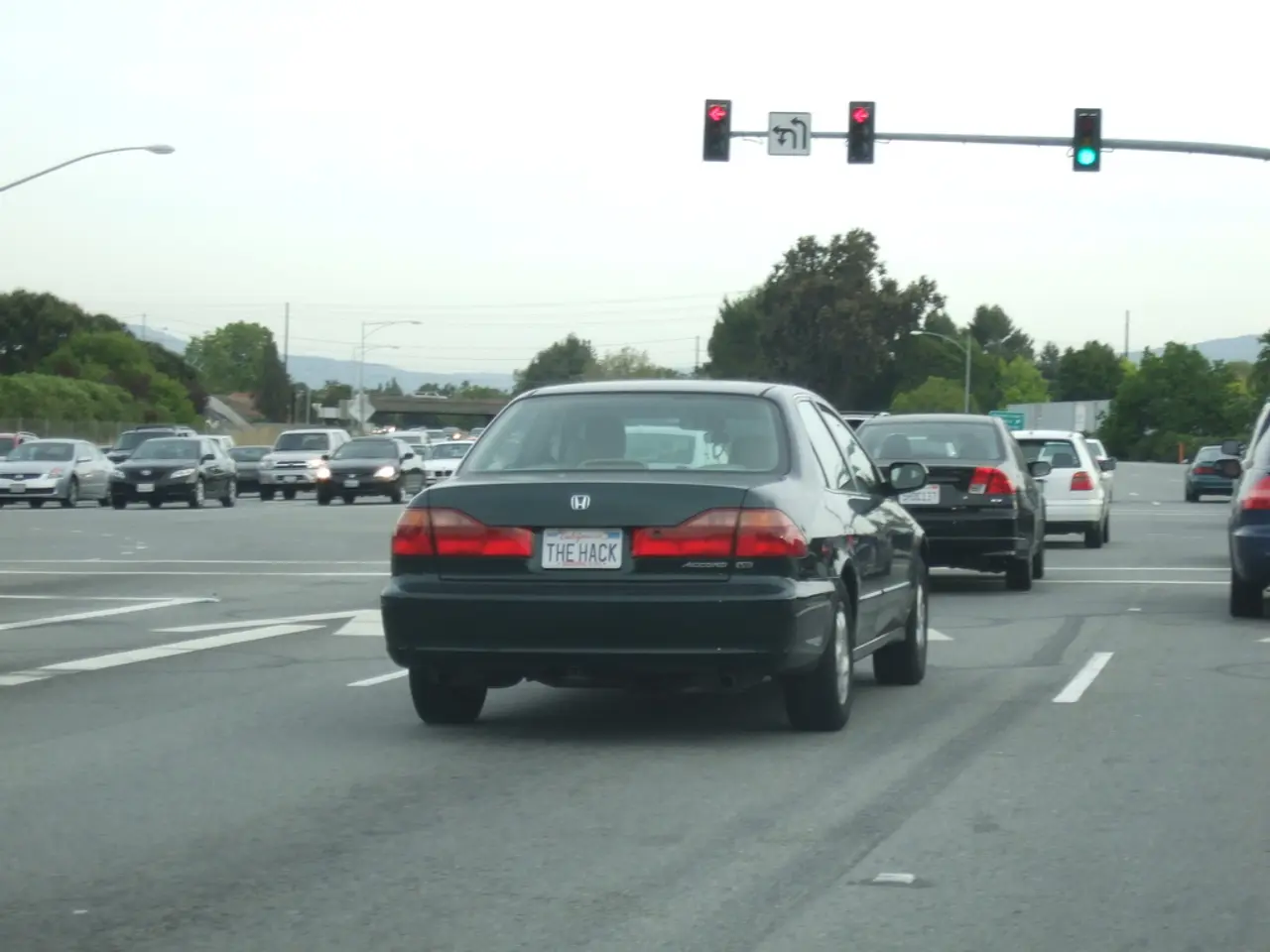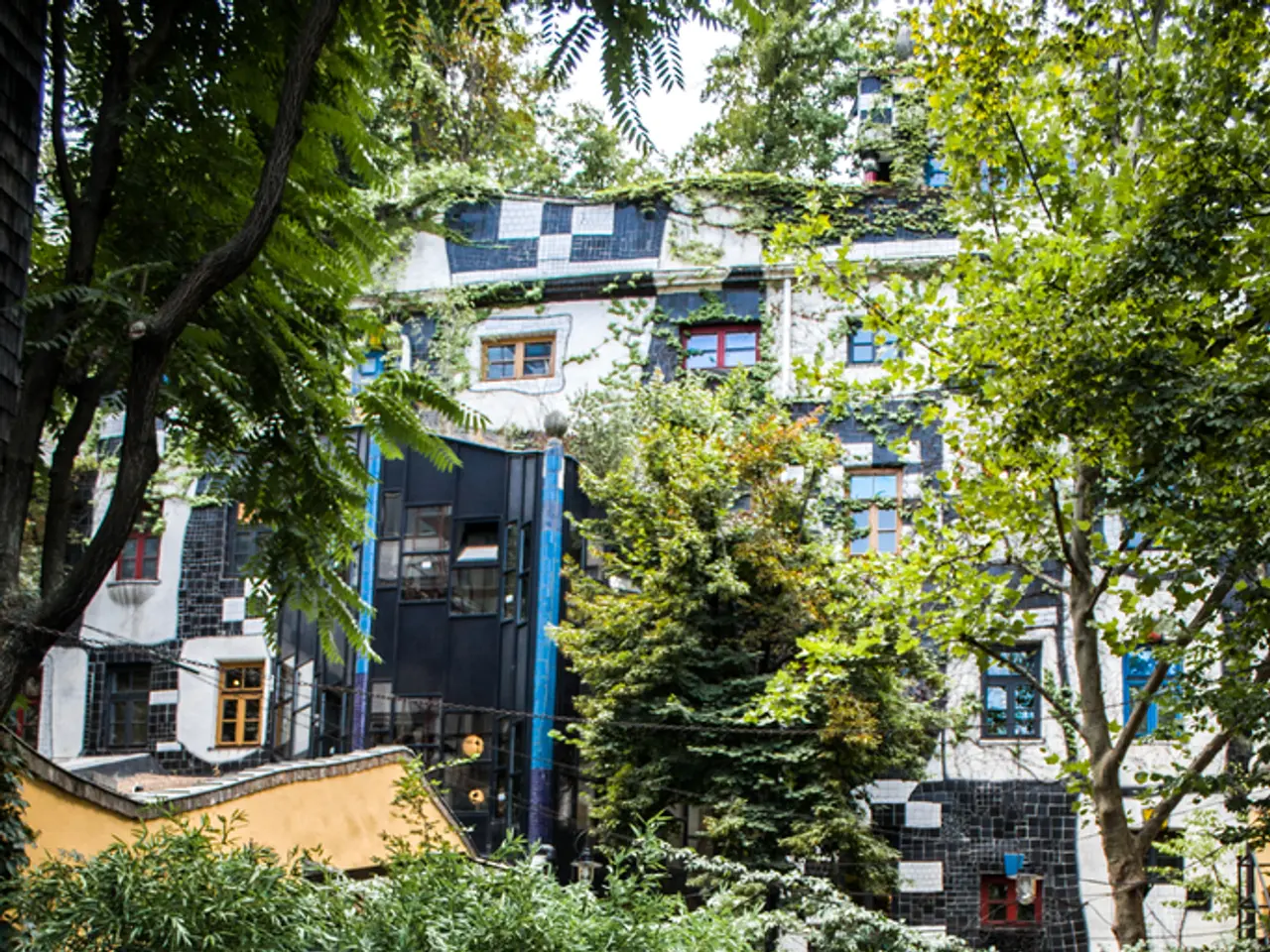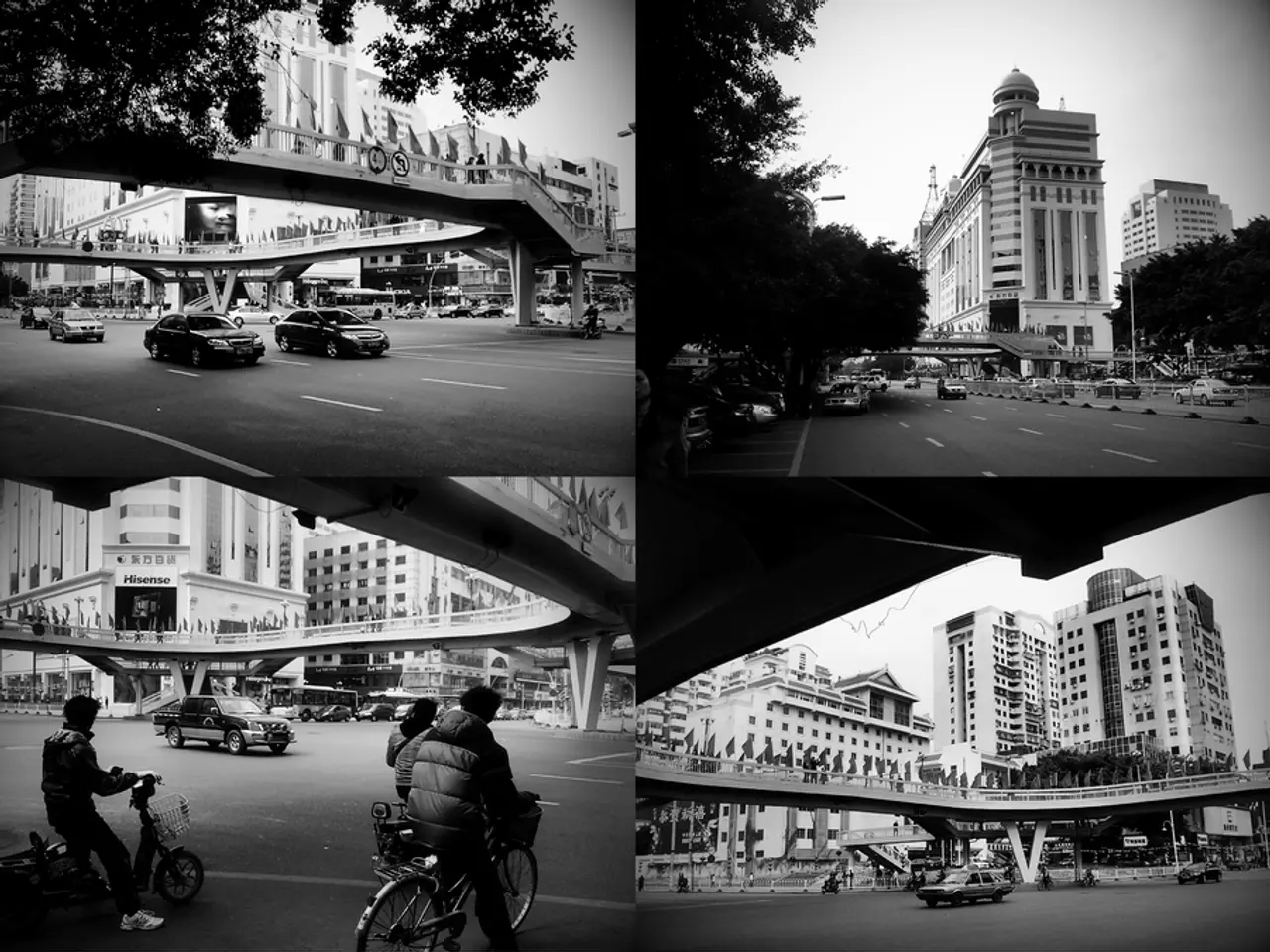Federal Government aims to prevent traffic congestion at border checkpoints
In response to increased border checks aimed at curbing irregular migration, both Germany and Poland have implemented controls at their shared border. These checks have led to significant traffic jams and waiting times of several hours, with some crossings experiencing up to 9 hours of delays [1][2][3]. To alleviate these disruptions, particularly on the A12 motorway in Brandenburg, various solutions are being explored.
Brandenburg's Minister President, Dietmar Woidke (SPD), has advocated for the addition of a third lane specifically for border processing on the A12 highway to ease traffic flow and reduce congestion on the German side [1][3]. The Federal Police are also evaluating potential structural modifications along the A12 to facilitate smoother border crossings, balancing operational inspection needs with traffic flow considerations [1][3].
Another proposed solution is the implementation of joint border controls between Germany and Poland, rather than separate national checks. This approach aims to streamline the process and reduce duplicated controls that significantly slow traffic. Both Woidke and Poland's counterpart, Marcin Jablonski, support this measure [3][4].
The German Federal Ministry of the Interior is committed to managing and mitigating traffic disruptions proactively through coordinated planning and infrastructure adjustments [1]. Woidke, as a former Poland coordinator, believes that a signal from the federal government is necessary for joint controls to take place within the framework of the Schengen Agreement [5].
These efforts are a reaction to the border checks that have been in place since October 2023, with Federal Interior Minister Alexander Dobrindt (CSU) intensifying these controls in May [6]. Poland's Interior Minister, Siemoniak, has stated that Poland is ready to suspend controls at the border with Germany if Germany stops its controls [7].
The temporary Polish controls are planned to remain until at least September 5, making these traffic management solutions urgent [5]. The border controls on the A12 are causing traffic disruptions between Frankfurt (Oder) and Swiecko, and structural changes on the A12 between these two cities are being discussed as a potential solution [2].
In conclusion, the German and Polish authorities are working together to examine adaptations that will ease traffic on the A12 motorway at the Germany-Poland border. The solutions being explored include adding a third lane for border processing, joint border controls, and structural modifications to the A12 to facilitate smoother border crossings. These efforts are aimed at minimizing traffic disruptions and maintaining efficient border control processes.
- The German Minister President, Dietmar Woidke, has suggested adding a third lane specifically for border processing on the A12 highway to decrease traffic congestion caused by increased border checks due to migration.
- The German Federal Police are evaluating potential structural modifications along the A12 motorway, aiming to balance operational inspection needs with traffic flow considerations, as a response to war-and-conflicts-induced migration and ensuing policy-and-legislation changes.
- Both Woidke and Poland's counterpart, Marcin Jablonski, support the implementation of joint border controls between Germany and Poland, as a strategy to streamline the border control process and reduce traffic delays, amidst ongoing general-news reports about migration.







